I have now tested some of the latest L-2 and L-1 motors collected from Dr Zigmund by our very own 'Nighthawk'.
Dr Z's nominal thrust ratings are:
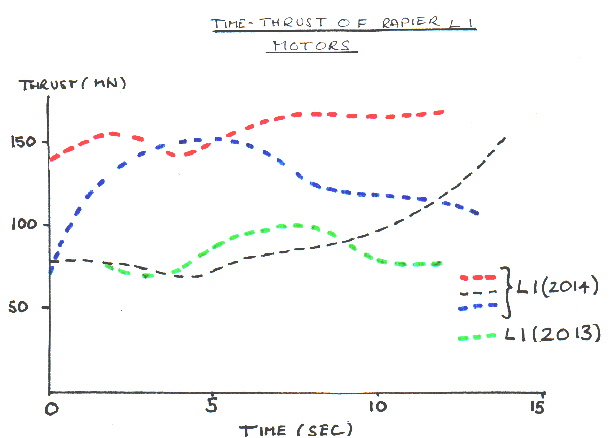
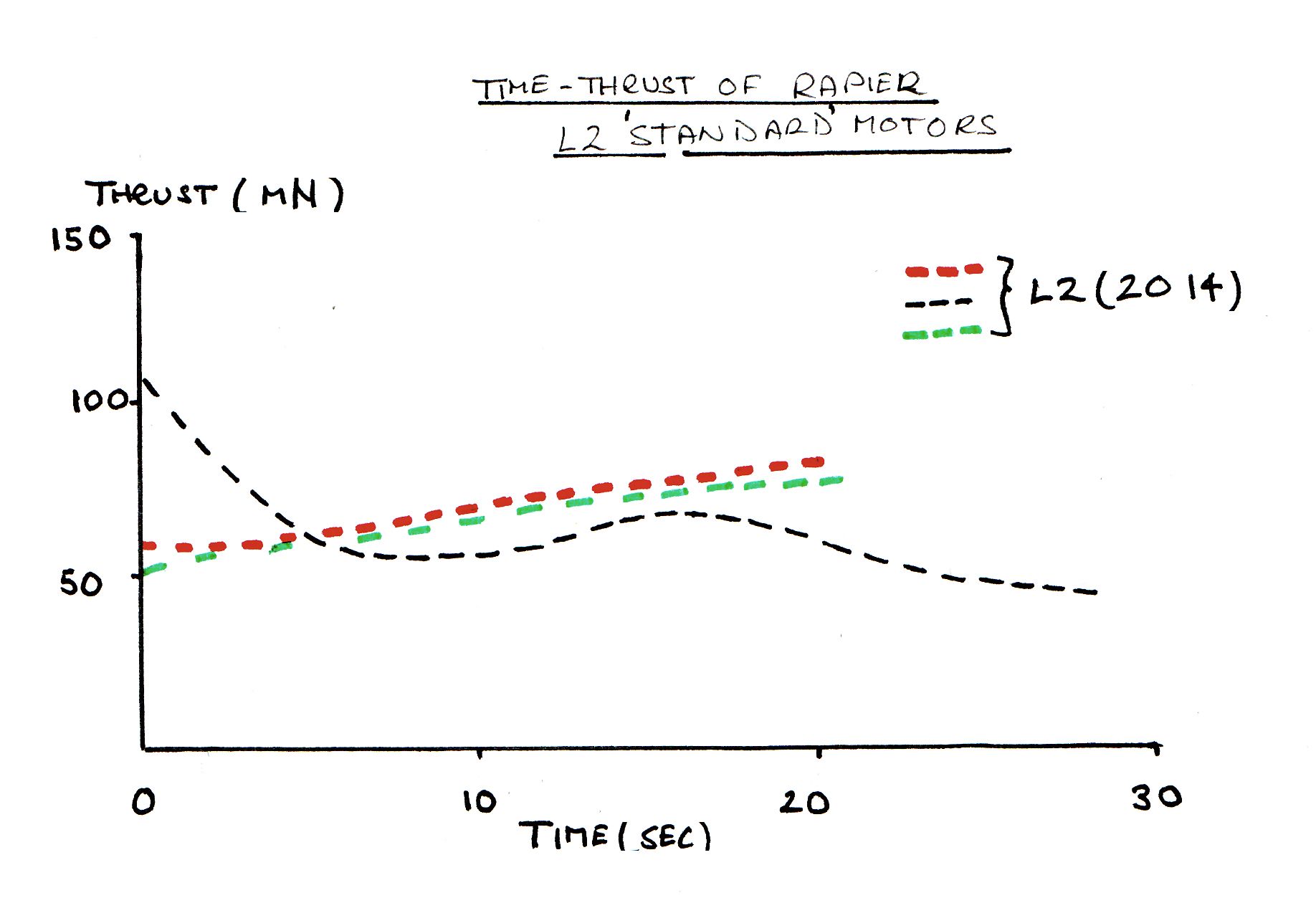
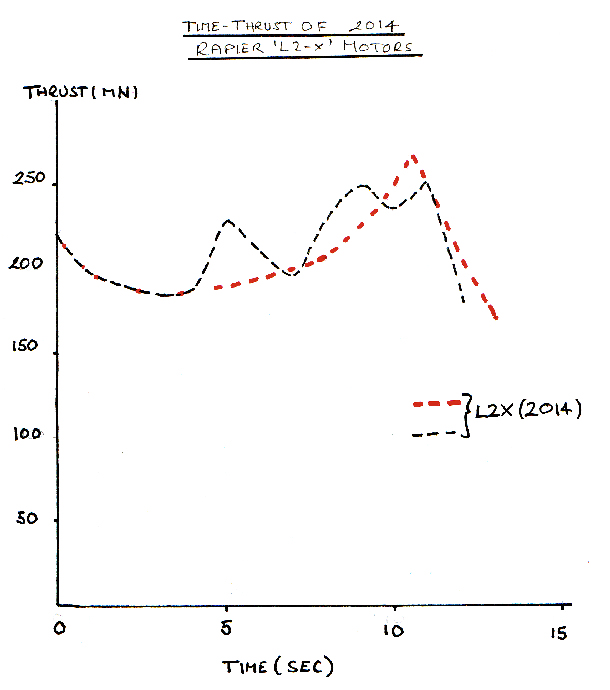
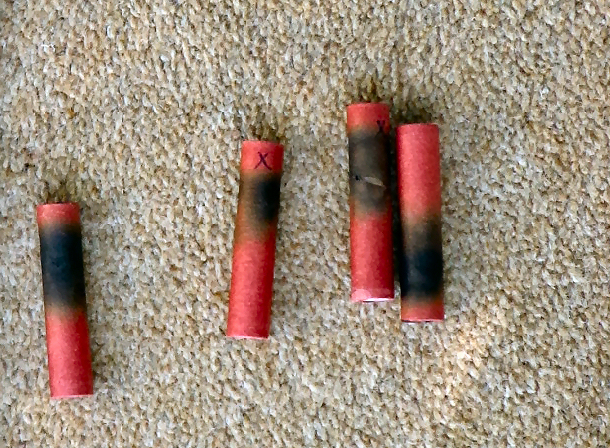

Note the shorter, though still acceptable, burn time of the 2014 motors. The 2013 L-2X motors worked well in built up models, and larger profile ans semi profile models (like my F-100) and I hope these 2014 motors will be the same.
The less than good news is that stocks of these 2014 L-2 X's are limited - so order now.
For those who want to fly Rapiers this year, and are starting out - my advice would be to buy some L-1's (of which I have good stocks ) and put it them in a (colourful) profile model (see the Jetex.org store!).
I hope talk to Dr Z in July so we can get some good L-2 motors of 120-130 mN, but until then we do have to, as in years gone by, work with what we've got!
As an 'addendum' to the above, here are some photos taken during the actual tests, just to prove I'm not making any of this up!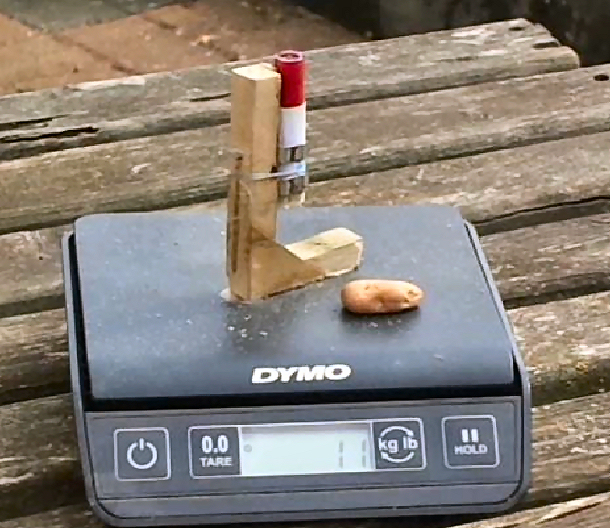
Above: a standard L-2 in the middle its run. Note the reading hovers on '11 grams'. The weight of the motor at this point can be calculated to be about 3-4 grams. The exhaust is barely visible.
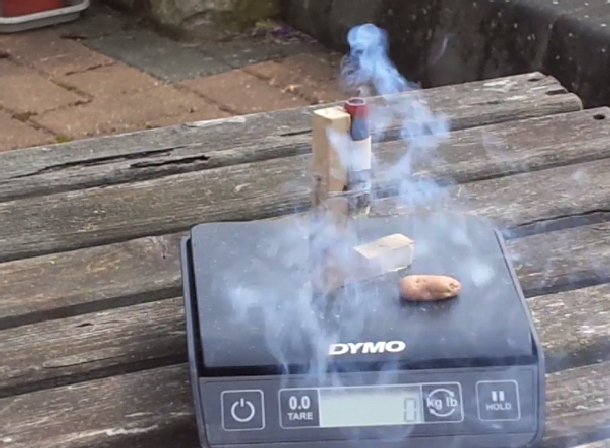
Above: a standard L-2 at the end of its run. Note the reading, seen through the smoke, is now '0 grams'.
By subtracting the weight of the motor at each time point (the motor looses about 5-7 grams during the power run ) it ca readily be calculated that the thrust of these standard L-2 motors is, at best, below 100 mN. Note the charred motor case.
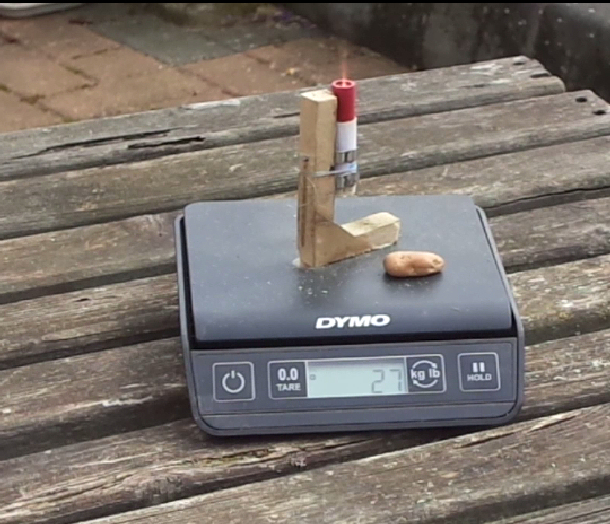
Above: an L-2 at mid run. Note the reading hovers on '27 grams' If the motor at this point weighs about 4 or do grams it means the (static) thrust is over 200 mn.
This is a useful amount of grunt, but not the 150 mN' specified. Note the rather impressive glowing exhaust which contrasts with the more feeble exhaust of the 'standard' L-2. The L-2 X was a lot louder, too!
I must emphasise that these simple static thrusts are useful in the comparing of motors, and the thrust in a model in high speed flight will be different.

